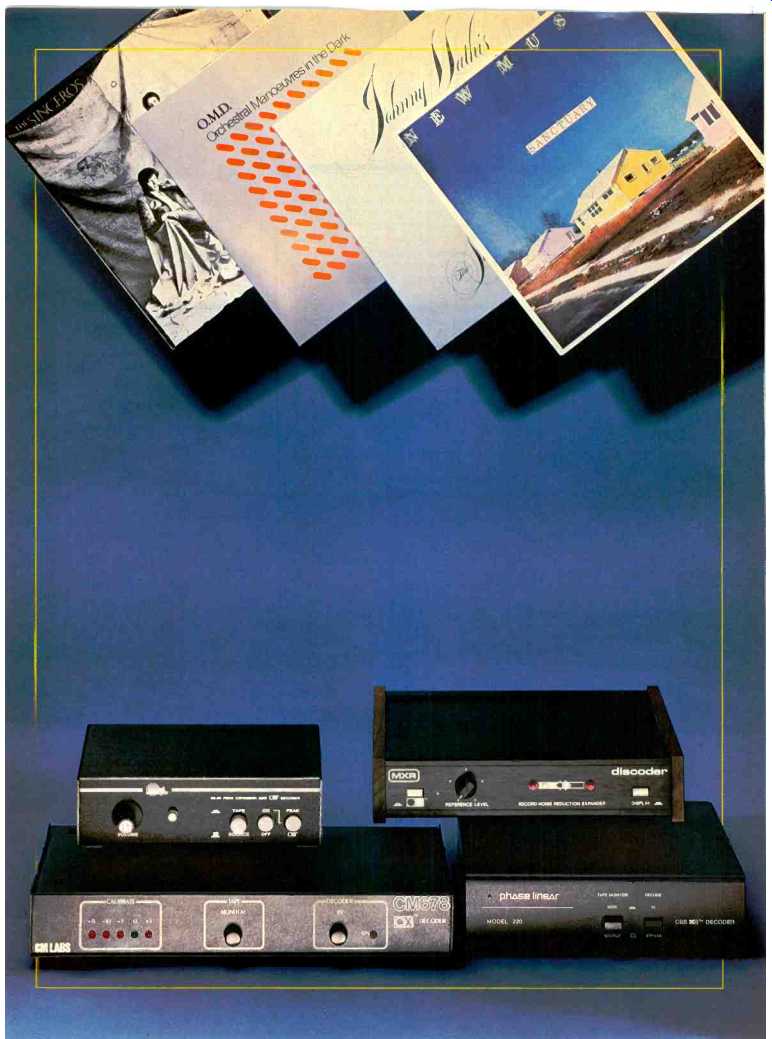
by LOUIS A. ABBAGNARO
[Director of Sound Reproduction Technology, CBS Technology Center, Stamford, Conn. ]
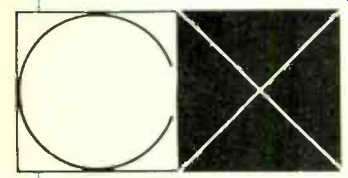
With the advent of digital technology in recording studios, the balance
between the dynamic range of studio tapes and records has been upset.
Prior to digital, a professional analog tape recorder with Dolby A playing
at a speed of 15 ips had an average signal-to-noise ratio of about 73
dB with an allowable peak headroom of approximately 12 dB, yielding a
total dynamic range of 85 dB. Multi-track mixdown often added some noise
which reduced this dynamic range by a few dB.
The 16-bit digital tape recorders have an average signal-to-noise ratio of about 80 to 85 dB which becomes 97 dB when one allows for peak factors. By comparison, today's phonograph records have an average signal-to-noise ratio of only 60 to 65 dB, which is approximately 20 dB poorer than the new digital tapes. Thus, while the record is reasonably well matched to analog tapes, it is limited when used with digital software. What this means is that if one aligns a digital tape and a record with the same music, the loud musical passages will sound similar but the soft musical passages which are noise-free on the tape will be cluttered with noise on the record.
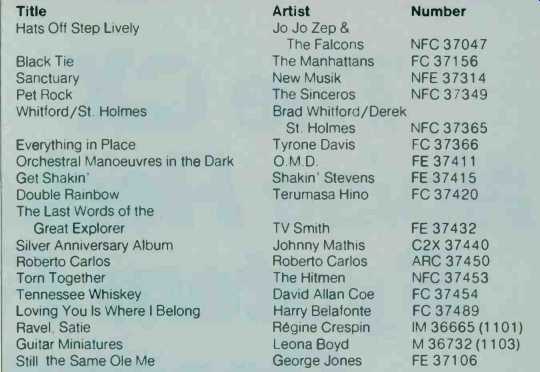
above: CBS Record Releases in CX Format
The thrust of this mismatch is to force improvements in the quality of records to provide a better match to digital studio tapes. Indeed, the so-called "audiophile records" which are available today are an attempt to provide a better match between the two media. The digital disc of the future is another means of providing this match. In both of these instances, however, premium costs for records and, in the case of the digital disc, for a new player do not make these approaches easy solutions for the mass of the record-buying public at this time.
At the CBS Technology Center we have often investigated methods of improving the dynamic range of records in an attempt to offer a record which could reproduce the dynamic range of digital music at no increase in record cost.
Since the dynamic range of the record is limited by surface noise, our goal was to achieve an essentially "noise-free" record. This led us to re-examine the use of compansion (i.e., signal compression during recording and expansion during playback) on records, an old idea but one whose time had now arrived for records. The result of these efforts led to the development of a compatible noise reduction system for records which we call CX. The goals set for CX were simple but challenging, namely:
- Expand the dynamic range of conventional records by 20 dB to equal that of professional digital source tapes;
- Compatibility i.e., the CX record must sound like an average record when played on existing stereo equipment; and
- Low-cost design since CX records should cost no more than conventional records and CX decoders should be low in cost.
In the following sections the design which allows us to meet these goals is described.

In order to gain a feeling for the CX process, examine the graphic illustration
in Fig. 1. In Fig. 1A, the dynamic range of a digital master tape is
shown. Here we see the average level of the loud music, the average level
of the soft music, and the tape noise floor. The range from loud music
to tape noise is 85 dB. Assuming the tape has been well mastered, the
soft music passages are recorded sufficiently above the tape noise. Thus,
when soft passages are replayed the music is heard but not the noise.
For explanation purposes, a sound level scale is shown in Fig. 1. If
the loudest average music is adjusted to be reproduced at a sound level
of 110 dB in the home, the tape noise floor is only 25 dB! In nearly
all instances, the tape noise is below the average background noise of
the listening room and becomes inaudible. The digital recorder thus allows
playback of music at levels achieved in live performances while eliminating
tape noise from the listening process.
When the same music is transferred to a conventional record with a smaller dynamic range, the music is no longer heard in a noise-free manner. In Fig. 1B, the dynamic range of a regular record is indicated as 65 dB from the loudest average music to the record surface noise. If the music on the digital tape is transferred directly to this record, the soft music passages lie at or below the level of the record surface noise. Upon playback, this music is contaminated with the familiar but unwanted sounds of the vinyl surface. This noise appears as myriad sounds including a low-frequency component generally called "rumble"; a swishing mid-frequency noise known as "ocean roar," since it often resembles the sound of ocean surf, and a steady high-frequency hiss often accompanied by a gritty sound and discrete ticks and pops. The noise encompasses the entire audio frequency range, and a typical spectrum of this noise is shown in Fig. 2.
On a sound level basis, when the loud music is at 110 dB, the record noise is now at 45 dB and can generally be heard in a listening room environment. To avoid this noise, the producer may increase the level of the soft program material relative to the loud music. What the producer really accomplishes in this instance is an arbitrary form of compression which reduces the dynamics of the music on the original digital tape. While the result may still be musically acceptable, the original dynamics cannot be accurately recaptured. The other choice until now has been to leave the dynamics unaltered and accept record noise in the soft music passages.
The CX-encoded record solves this dilemma as is shown in Fig. 10. The softest music passages are increased by 20 dB which allows them to be placed on the record comfortably above the record surface noise. Although the dynamics are reduced from the original tape, the process is directly reversible, as will be shown. Notice that the tape noise is also increased by 20 dB with the CX encoding process. Since tape noise was originally 20 dB lower in level than the record surface noise, the CX encoding merely makes the two noise levels equal. What this means is that a CX-encoded record played back without a decoder will not have greater background noise than a conventional record. An arbitrary selection of noise reduction of, say, 30 dB or more would raise the tape noise above the record noise. Such a record could not claim compatibility and in fact would be objectionably noisy to most listeners. The record in Fig. 10 is the compatibly encoded CX format.
The decoded CX format is shown in Fig. 1D and is obtained by playing a CX-encoded record through a CX decoder. Notice that the reversible nature of the CX process has placed the loud and soft music and tape noise at precisely the same levels as on the original master tape. Moreover, the record surface noise is reduced by the CX decoder by 20 dB. The final decoded CX record now has the full dynamic capability of the original digital source tape.
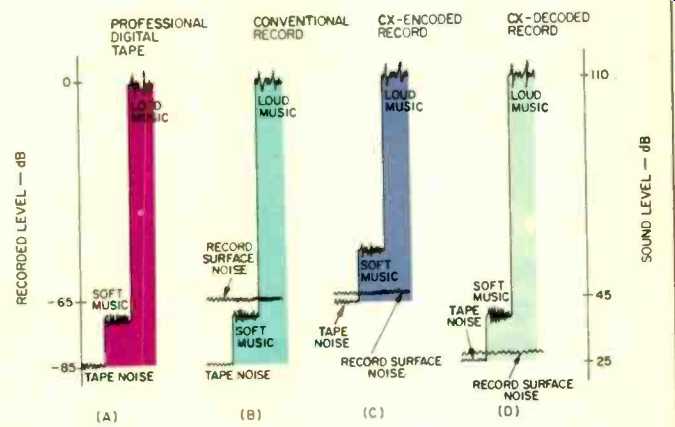
Fig. 1--Dynamic range of professional digital tape (A), conventional
record (B), CX-encoded record (C), and CX-decoded record (D).
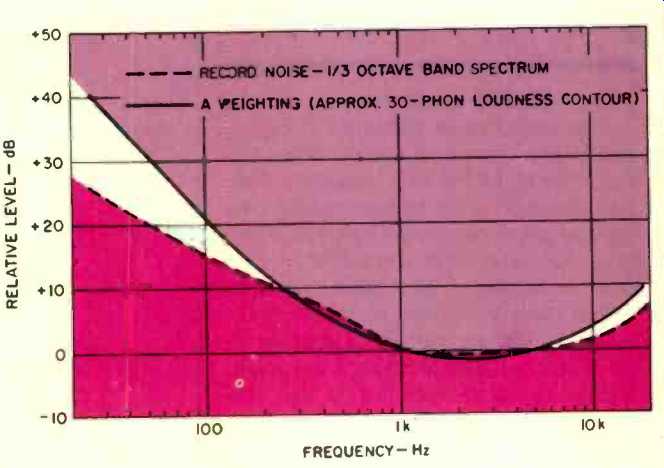
Fig. 2--Frequency spectrum of record surface noise.
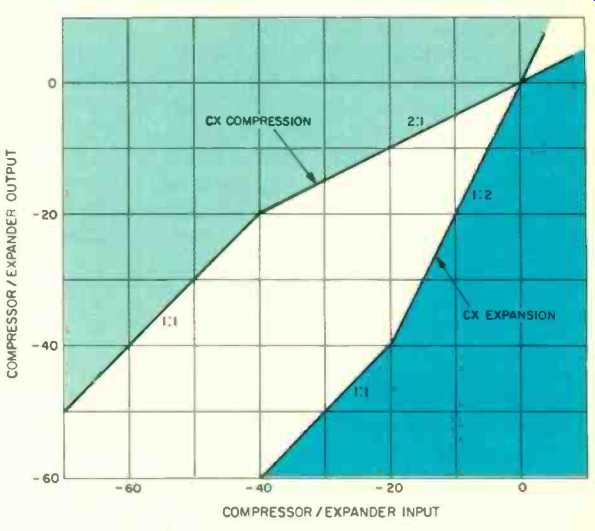
Fig. 3--CX compression and expansion functions.
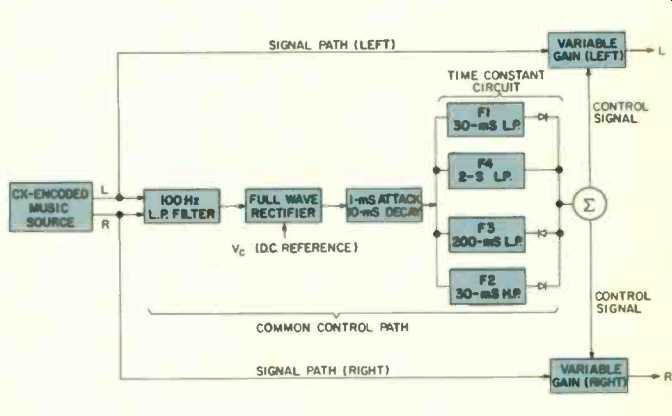
Fig. 4--Block diagram of CX decoder.

One of the advantages of the CX record is that the encoding is achieved
in a compatible manner so that CX records will yield average record quality
when played on existing stereo equipment. In the design of the CX system,
compatibility required satisfying four objectives: No alteration of frequency
response, smooth dynamic performance, no increase in record noise (as
discussed), and dynamic range reduction suitable for encoding most program
material.
Notice that compatibility is not identicality, that is, the CX-encoded record has modified the program dynamics but in a manner which is not obvious with most music material. Furthermore, since the process is reversible, the CX record can be decoded to provide an exact replica of the original source tape and elimination of record noise. Thus, listeners can buy and enjoy CX-encoded records today without a decoder or add a decoder to their existing stereo systems to obtain music dynamics equal to those on the best studio master tapes.
The record noise spectrum of Fig. 2 was briefly discussed earlier. Note that this noise is not flat with frequency. Neither, however, is the human hearing process which is described by equal loudness contours. This phenomenon was first investigated in the 1930s by Fletcher and Munson of Bell Labs. Their studies show that for signals listened to at low levels, such as record or tape noise, the ear is not as sensitive to low- and high-frequency sounds as it is to mid frequency sounds. For example, a low-level tone at 1 kHz will sound equally as loud as a 100-Hz tone with a 15 dB greater sound level. For low-level sounds, the equal loudness function is approximated by the "A-weighted" sound level meter curve which is plotted for reference in Fig. 2.
Actually, an electrical circuit duplicating the ear's loudness function would use the inverse of the A-weighted response as an attenuation characteristic.
Note that the A-weighted curve and the record noise spectrum are nearly equal at all frequencies. Thus, passing this noise spectrum through an A-weighted filter will produce nearly constant output at all frequencies. This explains why we hear noise of all frequencies on records and why an effective record noise-reduction system must operate at all frequencies in the audio bandwidth. A noise-reduction system for tape such as Dolby B, which works predominantly at high frequencies, would only solve part of the problem on records, even though it produces quite acceptable results on tape.
If the noise spectrum on records were not so ideally shaped, it would have to be equalized to produce a hearing shaped noise spectrum during recording which is re-equalized upon playback to obtain an overall flat record/playback frequency response. This process is known as pre-emphasis during recording and de-emphasis on playback and is used in many common compander systems. Unfortunately, pre-emphasis alters the frequency content of the program material as well as the noise in the encoded-only format, making it incompatible for listening. Only upon decoding is the correct frequency balance restored. Since CX was developed specifically for records, we could take advantage of the nearly optimum shape of the record noise spectrum and avoid pre-emphasis and de-emphasis networks which are not necessary. Thus, CX provides no alteration of frequency response when listened to in either the encoded or decoded state.
It should also be obvious from this discussion that CX is required to be a wide-bandwidth noise-reduction system to effectively eliminate all the components of record noise defined earlier. Elimination of only the hiss or rumble, for example, would still leave audible noise components.

Figure 3 shows the CX compression/expansion function. To make up for
the mismatch between records and digital tapes, 20 dB of noise reduction
is required. The CX encoding compresses the input range by 20 dB in a
selective manner in which all high-level signals are compressed at a
2:1 rate while low-level signals are not compressed. In the compression
curve of Fig. 3, an input signal at 0-dB level has an identical output
level, i.e., 0-dB gain, while an input signal of -40 dB has an output
level of -20 dB, for a 20-dB gain. This nonlinear gain function provides
a relative increase of 20 dB between soft and loud music sounds as indicated
previously in Fig. 1. Below -40 dB, no further gain increase occurs;
however, low-level signals are still boosted by 20 dB, i.e.,-60 dB input
becomes -40 dB output, etc.
The CX expander provides for a complementary process which expands high-level signals at a 1:2 rate and provides no expansion of low-level signals. Note that the expansion curve is a mirror image of the compression curve. Thus, a signal at-30 dB when compressed becomes -15 dB; when the -15 dB signal is expanded, it returns to -30 dB.
The choice of the CX compression and expansion slopes is based on psychoacoustic considerations which are fairly obvious to anyone listening to records, namely, that the noise on records is audible during silent or soft music passages but is not generally heard during medium to loud passages. Our studies indicated that any slope at low levels other than 1:1 would cause a modulation of both record surface and tape noise which could often be detected when listening to the record both with and without the decoder. Since 20 dB of noise reduction was required, we chose the 2:1 rate for high-level signals and returned to 1:1 for low-level signals. This choice aids in providing the required smooth dynamic performance essential to this system and yielding the desired 20 dB of noise reduction.
Because of the "knee" in the compression and expansion curves, they should ideally be matched. This requires standardization during recording and playback. Such standardization is achieved by defining the 0-reference level in Fig. 3 such that it corresponds to a velocity on the record at 1 kHz of 3.54 cm/S rms. All records are mastered around this reference point to insure that every manufacturer's records will play equally well on all playback equipment.
This recording specification, however, does not limit in any manner the levels used to record CX records. Thus, CX records can be mastered at levels equal to non-encoded records with the same program material.
Since a playback calibration is also required, a small CX calibration record containing 3.54 cm/S reference tones is supplied with the decoders. When the decoder is first installed, the record is played through the decoder and the 0 reference level is adjusted. The entire calibration process takes less than one minute and is required only upon installation of the decoder or when a cartridge is changed. Once calibrated, all CX records are played without any further adjustments.
When non-CX records are played, the decoder should be switched out. While playing a non-CX record through a decoder will reduce its noise, the resulting music program may not be acceptable from a listening standpoint.
The reduction of noise with a companding system is a dynamic function: When the music is soft, maximum compression and re-expansion occur to provide the maximum noise reduction. With loud music, very little compression and expansion are required since the noise is naturally masked by the music As this implies, the noise floor is continuously moving depending upon the level of the music program material. A good companding system must handle this motion smoothly so that noise modulation is not audible. With the CX system, this presented a dual design problem since the program material is listened to both with and without an expander.
One obvious solution is to allow only very slow transitions of the noise as a function of time, which would not be noticeable to listeners. This requires the design of a system with a very long time constant in the control path. The problem with such a system is that it will also respond slowly to rapid changes in musical program dynamics, rendering it unable to follow the typical attacks and decays of the music. Alternately, if one proceeds to design a system to respond quickly to music dynamics, a fast attack and relatively fast decay are required. The drawback with this system is that it will move the noise floor about in a rapid manner and produce noticeable noise modulation which is heard as a "swishing" sound. In addition, it can be shown that a continuously fast-acting circuit will also track small changes in the musical program rather than reaching an acceptable average level. This produces a modulation distortion of the audio program material. What appears to be needed is a circuit which can alternate between fast and slow operation in response to changes in music dynamics and also ignore small changes which could induce modulation distortion. This is what CX circuitry provides.
========
Table I
Average signal-to-noise ratio of tapes and records. (Add 12 dB to these figures to obtain peak signal-to-noise ratios).
- Professional analog tape with Dolby A: 70-75 dB
- 16-bit digital tape: 80-85 dB
- Modern stereo record: 60-65 dB
- Future digital record: 80-85 dB
- CX-decoded record: 80-85 dB
========
=============
Hardware Licensees for the CX System
Advanced Audio Systems Int'l.
Applied Technology
Audio Teck Industries
Audionics
Backes & Muller
CM Labs
MXR
Micro-Trak
Nakamichi
Phase Linear
Phoenix Industries
Sound Concepts
Soundcraftsmen
Superscope/Marantz
Telefunken
Three additional licensees are applying the CX noise-reduction system to video technology: MGM/CBS Home Video, RCA SelectaVision, and Universal Pioneer.
=======
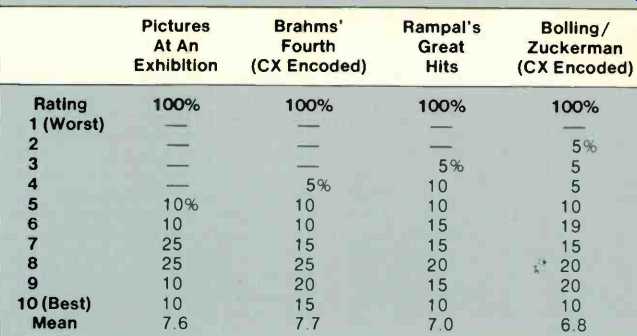
Table II--Overall album ratings. Reviewers were asked "How would
you rate this album overall?"
========
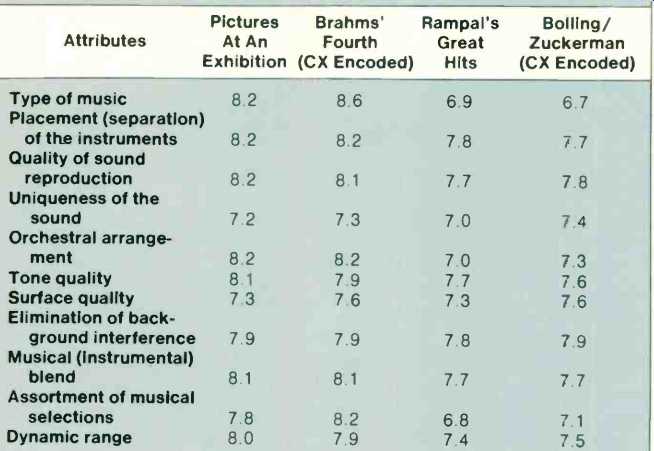
Table III--Ratings on album attributes; 1 is worst and 10 is best.
==========

The CX decoder or expansion circuit is shown in Fig. 4. It's comprised
of left and right variable-gain amplifiers (VGA) whose gain is determined
by a common control path arranged in a feed-forward loop. The CX compressor
is identical except the control path is arranged in a feedback loop.
To discuss operation of the CX expander, assume a properly CX-encoded source of music is driving the decoder. Note that the left and right channels proceed directly to the VGAs, whose gain is determined by the central control path. Thus, except for the variable gain function, no other alteration of the audio signal occurs.
In the control path, the left and right signals pass through a 100-Hz highpass filter which lets the main portion of the audio program control the gain but eliminates very low frequency signals. Its primary purpose is to ensure that low frequency rumble components on the record cannot activate the control path. Next, the left and right channel signals are full-wave rectified, creating a d.c. control signal which is compared against a d.c. reference (Vc). If neither the left nor right signal is greater than Vc, the control path gain is fixed as is the gain of the two VGAs. The system thus operates with a 1:1 gain over this region. When either the left or right channel inputs exceed Vc, the control path gain increases directly with the input. At the VGAs both the signal and control path gain increase together. The output signal thus increases at twice the rate as the input signal on a logarithmic basis; i.e. a 6-dB change in the input produces a 12-dB change in the output. This is the 1:2 gain portion of the expansion curve in Fig. 3.
The signal next passes through a fast attack (1 mS) and decay (10 mS) circuit. As explained earlier, such a circuit, if used alone, provides good response for rapid transitions but also produces audible noise motion and modulation distortion. To handle these transitions, a multiple-time-constant circuit is used which operates rapidly for large changes in music dynamics and slowly during steady portions of the program.
The multiple-time-constant circuit comprises four filter paths with specially selected time constants. Two of these filter paths, F1, the 30-mS low pass, and F2, the 30-mS high pass, operate only on large increasing forward changes in the control signal and, hence, work on signal attacks. The diodes shown with these filters serve two functions: For forward-biased signals, they provide a dead band which inhibits operation until a large signal change occurs, and for reverse biased signals, they inhibit operation for all signal levels. Filter F2, the 30mS high pass, allows a rapid response to the attack signal. This attack signal, however, often contains unwanted ripple components associated with small changes in the music dynamics which can produce a modulation distortion. Filter F2 thus is cut off rapidly and filter F, takes over. Because F, is a low-pass filter, the unwanted ripple is removed. Since the summation of the outputs of F1 and F2 provides the final control, the fast attack is handled smoothly and ripple components are removed after a few milliseconds. While the ripple can be present momentarily, the time is too short for the ear to detect any distortion. This provides clean response to any music transients which occur.
Filter F4 is continuously in operation but provides primary control only when no major changes are occurring in music dynamics; its time constant is 2 S. Filter F3 works only on signal decays, and the reverse-biased diode again serves two functions: Namely, it prevents any response for forward-biased signals (attacks) and it allows response only for large changes in reverse-biased signals (decays). As a signal decays from a loud to a soft level, the ear will readjust its listening after about 200 mS and begin to focus attention or the soft portion of the music. If a fast decay persists after 200 mS, it will continue to adjust the gain rapidly during a time when the music no longer masks any tape or record noise. This noise change may then become audible as an undesirable breathing or swishing sound. With the CX circuit, F3 allows a rapid decrease in signal level during the period when the ear has not readjusted to the soft music. After 200 mS, F3 no longer functions and F4, the 2-S filter, handles the remaining decay. Even if noise is now perceived, it will appear as a steady component and undesirable breathing effects will be eliminated from the output signal.
The multipath CX control circuit was the result of extensive engineering design and psychoacoustic evaluations which provided an optimum determination of time constants, and the same network operates in both the CX compressor and expander yielding smooth dynamic performance for both the encoded and decoded music. This is a must for compatibility. Moreover, the control circuit can be embodied in a simple circuit configuration which is amenable to large-scale integration, and can be realized with a single integrated circuit and a few external resistors and capacitors. This means CX decoders will be low in cost as an add-on to existing stereo systems or as an added feature for stereo receivers or preamps.

Prior to releasing the CX system, extensive testing was done to ensure
that both the encoded and decoded versions of the record would be acceptable
to discriminating music listeners. In one of these tests, four classical
recordings were distributed to 500 consumers. Two of these records were
CX encoded and two were standard CBS Masterworks releases. All four records
were in standard jackets and contained no markings to indicate any special
encoding. Consumers listened to the four records on their home systems
without any CX decoding equipment. Their systems were above average in
quality, with an average retail cost of about $1400. The listeners were
classical music buffs who purchased more than 25 record albums per year
on average.
These listeners were asked to fill out questionnaires summarizing their opinions after auditioning each record. They rated each category on a scale of 1 to 10. Table I shows the overall consumer rating of these four albums. The results indicate that the CX-encoded records were rated equally to the non-encoded records. In Table II, the scores for many attributes are shown, and again the CX-encoded and conventional records received equal ratings. Notice that in the dynamic range category the CX record compression did not appear to be obvious to these listeners. While we cannot guarantee that every record will encode compatibly with CX, the results of these tests led us to believe that compatibility was possible for a wide range of records and that the compatible product would be acceptable to the majority of listeners. Moreover, critical listeners will probably be the first to buy decoders and obtain the full CX benefit of a noise-free record.
As has often been reported, proper record care is important to maintain continued low-noise playback. While it might seem that a CX noise-reducing decoder would eliminate this need, the answer is not strictly true. Because of the manner in which CX (and many other noise-reduction systems) operates, it reduces the residual surface noise and other low-level signals by 20 dB. High-level signals are reduced by smaller amounts until finally a 0-dB (3.54 cm/S) signal receives no gain reduction.
What this means is that large noise signals on a record, such as those which would be produced by a deep scratch of the record surface, will be audible even when played back through a CX decoder. Dirty records can also accumulate large dust globules which will produce impulse noise sounds which are also audible through the decoder. Thus, CX does not eliminate the need for proper record care, but it does ensure that properly cared for records will provide many more noise-free plays than will non-CX records.
CBS has initiated the release of CX albums and will continue to enlarge the CX-encoded library. All encoded records are marked with the CX logo on the label and jacket for consumer identification and cost no more than conventional records. Initial releases have received good acceptance from consumers and audio reviewers even though most listeners do not yet own CX decoders. This would appear to support the claimed compatibility of the CX system.
CX decoders are available from several companies, and the opening of this article displays several units. The CX logo is placed on the front panel of each decoder for consumer identification. Both the number of decoders and CX-encoded records will be increasing in the next few months. In 1982 several preamps and receivers containing CX circuitry will also be in the marketplace. Thus, CX will soon be available for all consumers who wish to listen to music in the absence of record noise.
======SIDEBAR========
The Men Behind the CX System
Rather than rely on rumors and unknowledgeable comments, we felt it best to go straight to the source and ask some tough questions of the man who wrote the main portion of this article, Lou Abbagnaro, and of Bob Jamieson, Vice President, Marketing and Creative Operations, for the CBS Records Group.
Audio: There has been a lot of talk in the trade about the CX system's compatibility claim, since it is a sort of Holy Grail for noise-reduction system designers. I think that most folks are listening for an identical sound between an unprocessed or non-CX disc and a CX disc played without the decoder. In my own listening tests, the most pronounced thing for a CX disc played undecoded vs. decoded is a dropping away of the noise floor. However, on the CX releases so far there seems to be less dynamic range than I find on direct-cut discs or digitally mastered records, though I admit that it is certainly not the same program on each of the discs. It's my understanding that some of the mastering' guys at the cutting houses are complaining about two items, that they feel there is an unacceptable loss of dynamic range and changes in the frequency response with the undecoded CX disc. Who wants to comment on this?
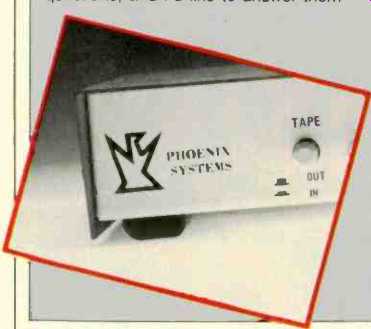
Abbagnaro: You're really asking two questions, and I'd like to answer them both. First, about compatibility. We have never stated that a CX-processed disc, played undecoded, is identical to, say, a direct-to-disc recording or to a digitally mastered recording. We do say that the undecoded CX disc is acceptably good, and we make three points about this undecoded state.
One is that there is no change in the relative balance of the operational music frequencies, and two, we have smooth dynamic performance, both with and without the decoder, so that one isn't aware of listening to a compressed record. Third, while we do bring up the low-level material, which does reduce dynamic range overall, such a reduction is suitable to the material from a listener's standpoint.
But let me get back to the producer's end of things on this identicality question. Some of the things which were quoted in the press were attributed to people who had at that time not heard the system, and I think that a big question is .. .
Audio: Pardon me here. There are at least three big stories in the trade press which quote some big names in mastering one guy says "disaster, not compatible," while another says "pure, unadulterated junk." And these are well-known names; what you're saying is that guys were shooting from the hip, that they had not listened to the system?
Abbagnaro: That's right, exactly right.
It is my understanding that they had not had a chance to fully evaluate the system. But it is important to put this into perspective. The compatibility issue, we believe, won't be as important if the CX system takes hold as strongly as we believe it will. But in the meantime, we don't want consumers without CX equipment to have any problems, to react lo a CX-encoded disc as if it were an inferior quality record. We think that much of the new equipment, still to be introduced, will incorporate CX decoding. Until then, it's important to us to have the consumer feel the records he's purchasing are reasonably acceptable in the undecoded state.
Jamieson: Our projection is that in five years or so, virtually every record on the market will be CX encoded that just about the only type of record you'll be able to get will be a CX type. We base this on what happened with the stereo record, and we think it's the only time in history that a record company made such a major improvement in the sound quality of its records without charging the customer more. We offer CX discs at no additional charge. And this is quite different from what happened with stereo's introduction, when people had to pay about $1.00 more to buy the new discs. And further they had to also buy a double set of equipment-a second amplifier, a second speaker, a special phono cartridge... .
Audio: Okay, you're getting over into hardware costs now, so it might be good just to review how the royalty arrangement and how the costs to the consumer situations actually do work out. You announced in May of last year that you weren't going to charge more for your CX-encoded discs and that the technology was going to be available to the rest of the record industry on a royalty-free basis. The hardware presently costs from about $50.00 or so to $100.00, all in outboard black box format (with one exception), though this will obviously change quite rapidly once the IC chips from National Semiconductor start coming through. So, then, what will the cost be to the buyer of a receiver, for example, during the fall of 1982? How much will 20 dB of noise reduction for, say, the 150 records available then cost him?
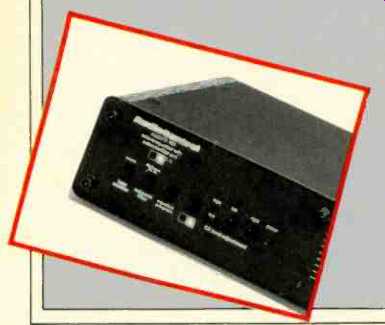
Jamieson: You might be able to get the price tag down to about $10.00 but that's about it. And this cost projection is based on the Dolby B noise-reduction experience. And that's what we expect to happen. We expect it to be built into every receiver and preamp.
Audio: Pioneer has just adopted the CX system for use in their videodisc system, and they make much the same point. However, they say that all of their new releases, as well as all of their new video hardware, will be CX. Why, then, doesn't CBS, with all of its muscle, simply say to these artists and producers that everything that comes out of this record company will be CX encoded? And why aren't the CBS/Sony discs from Japan being encoded?
Jamieson: The reason is quite basic to our relationship with the artists and producers that it is simply wrong to crack down in such a fashion. We feel that the best way to introduce this system is to win acceptance by showing these people its advantages. I have had no comments from anybody that the system degrades the program when the CX disc is played in decoded fashion. Even those folks who are detractors say that the decoded record is superior to the record system we now regularly deal with.
The CX system isn't so simple to implement that you just decide to use it and then just flip a switch. It takes expertise to handle it in the right way. We feel we owe the producers of records the courtesy of sharing our knowledge of the system, because once they have this knowledge, and become aware of what the system can do, we think they will become convinced that the CX disc is an improvement over existing records.
Audio: Is this, then, a matter of artist and manager option, of contractual obligation?
Jamieson: In some cases, there may be a contractual obligation involved, but more basically, we are not going to put out any CX records which are a surprise to the artists. We are going to all of our artists and asking them to listen to test pressings. Certainly, we would like them all to adopt the CX system, but if they have any doubts or any problems, we want to discuss these things with them.
Audio: Let's go back to the question of expertise. You mentioned that it isn't a "flip a switch" process. Is there some special knowledge involved?
Jamieson: Not exactly. We obviously have more experience with the system and we want to share this with the various artists, producers, and mastering engineers. This doesn't involve a special or higher level of training, but it does take knowing how to adjust the overall levels of sound on a recording to make the disc the best it can be when it finally comes out.
Audio: Why is this whole system taking so long to get off the ground? I first heard about it late in 1980, and as we do this interview during late October 1981, there are about a dozen licensees on the hardware side and two or three software makers. But the list of records so far released is only 17 titles long, and all of these are from CBS. What's taking so long, particularly in the classical area where there seems to be only one release so far? When are the other guys going to release discs?
Abbagnaro: Let me come to Bob Jamieson's defense on this one. First I have to point out that he is the third man to have charge of this project during that year period, and that's going to slow anything down. Also, we didn't officially introduce the system to the press until May of 1981, so that you first heard about it somewhat early.
Now, I assume you know something about the lead-time required between the initial announcement of a system such as CX and the actual widespread incorporation of the system into the hardware. The same applies to disc production.
Jamieson: We really can't answer for the plans of any other software maker, just as we wouldn't want them making commitments for us. However, I can say on our own behalf that about the time this article appears you will have seen an obvious step-up in the rate of CX releases, so that by the end of March there will be about 60 to 70 titles available. Also, we have just heard that RCA is going to be putting the CX system into their SelectaVision.
Audio: Okay, one more question. One of the products of the rumor mill is that there is going to be a double inventory situation on the CX discs, just as there was with the various types of quad records. My highly placed source at The Mill also says that there were some "test releases" early last year to see if the CX disc was truly compatible, that is, undetectable from an ordinary unencoded record, and that one of these discs was the Korngold Violanta. One of Audio's esteemed competitors gave this disc a "Recording of Special Merit" award but found the "recorded sound compressed, lacking in warmth, and unkind to the singers." Could you comment on this?
Abbagnaro: This gets back to the compatibility question again. It's our belief that the CX disc, played undecoded, exhibits no frequency response changes from the recording pressed in the standard way, and that there are no changes in the dynamics which will be objectionable or, in most cases, noticeable to the user. However, with the particular recording you mention, there were some test pressings made, and unfortunately it was one of these which appears to have gone out to that reviewer. As I say, however, when the system is set up correctly, we believe there are no anomalies or difficulties that would be objectionable.
Audio: One last question. With your major investment in studio equipment of the analog persuasion, are you simply introducing the CX system to stall off conversion to digital? Or at least until there is a viable system that's digital all the way through from the disc and pick-up to amplifier, if not the speaker?
Jamieson: If I understand it correctly, CBS is in the music business, so that whatever the consumer wants, whatever the configuration, we will be there.
We didn't introduce the CX system to get into a noise-reduction race or competition, but rather to improve the technology of recording, to give the con sumer the best record possible. We simply have the technology to make a better record and we're going to make it available. But whatever that technology, it is the consumer who's going to make the final decision, and we will deal with that decision whenever it comes and whatever it is.
==========
(adapted from Audio magazine, Feb. 1982)
Also see:
Introducing Dolby S-Type Noise Reduction (Jun. 1990)
EQ & NR: Striking A Balance (Aug. 1988)
Deck to Deck Matching and NR: Straightening the Mirror (Aug. 1986)
= = = =